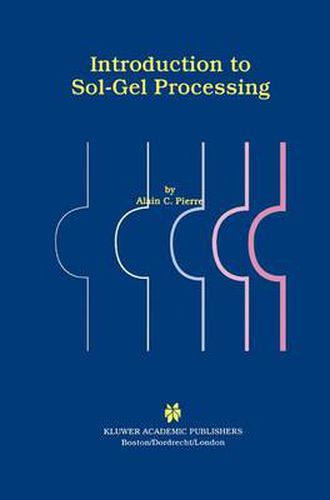Readings Newsletter
Become a Readings Member to make your shopping experience even easier.
Sign in or sign up for free!
You’re not far away from qualifying for FREE standard shipping within Australia
You’ve qualified for FREE standard shipping within Australia
The cart is loading…






This title is printed to order. This book may have been self-published. If so, we cannot guarantee the quality of the content. In the main most books will have gone through the editing process however some may not. We therefore suggest that you be aware of this before ordering this book. If in doubt check either the author or publisher’s details as we are unable to accept any returns unless they are faulty. Please contact us if you have any questions.
This text introduces undergraduate and graduate students to the field of colloids applied to materials processing, better known as sol-gel processing. It is written for engineering or science students in the fields of chemical engineering, materials processing, ceramics engineering, colloid science and mineral chemistry. However, the most important facts about the most recent developments, including mixed organic-inorganic sol-gels known as hybrid materials and the use of surfactants and micelles, are addressed. More precisely, the book focuses on gathering the main theories related to sol-gel processing in a comprehensive manner, so as to provide the most important scientific basis to students. The book is organized in such a way that each chapter corresponds to one of the main steps in a chronological order of application of sol-gel techniques to the synthesis of materials. The book first presents elementary solvent chemistry, in particular the partial charge model theory. Next, theories on the nucleation and growth of particles and on the steric or electrostatic stabilization (also known as DLVO theory) of colloidal suspensions, are gathered in a chapter on colloidal particles. Another chapter is devoted to the theories on gelation. Gels, their structure and properties at large such as their swelling, shrinkage or drying behaviour, also constitute an important chapter. After drying, gels become almost traditional ceramic materials and they are often submitted to thermal treatments during which they can phase-transform and sinter. Two chapters offer an opportunity to gather the main theories related to these two fields. Finally, the main applications are reviewed according to the domains of application, particularly for coatings, filtering membranes, and catalysts.
$9.00 standard shipping within Australia
FREE standard shipping within Australia for orders over $100.00
Express & International shipping calculated at checkout
This title is printed to order. This book may have been self-published. If so, we cannot guarantee the quality of the content. In the main most books will have gone through the editing process however some may not. We therefore suggest that you be aware of this before ordering this book. If in doubt check either the author or publisher’s details as we are unable to accept any returns unless they are faulty. Please contact us if you have any questions.
This text introduces undergraduate and graduate students to the field of colloids applied to materials processing, better known as sol-gel processing. It is written for engineering or science students in the fields of chemical engineering, materials processing, ceramics engineering, colloid science and mineral chemistry. However, the most important facts about the most recent developments, including mixed organic-inorganic sol-gels known as hybrid materials and the use of surfactants and micelles, are addressed. More precisely, the book focuses on gathering the main theories related to sol-gel processing in a comprehensive manner, so as to provide the most important scientific basis to students. The book is organized in such a way that each chapter corresponds to one of the main steps in a chronological order of application of sol-gel techniques to the synthesis of materials. The book first presents elementary solvent chemistry, in particular the partial charge model theory. Next, theories on the nucleation and growth of particles and on the steric or electrostatic stabilization (also known as DLVO theory) of colloidal suspensions, are gathered in a chapter on colloidal particles. Another chapter is devoted to the theories on gelation. Gels, their structure and properties at large such as their swelling, shrinkage or drying behaviour, also constitute an important chapter. After drying, gels become almost traditional ceramic materials and they are often submitted to thermal treatments during which they can phase-transform and sinter. Two chapters offer an opportunity to gather the main theories related to these two fields. Finally, the main applications are reviewed according to the domains of application, particularly for coatings, filtering membranes, and catalysts.